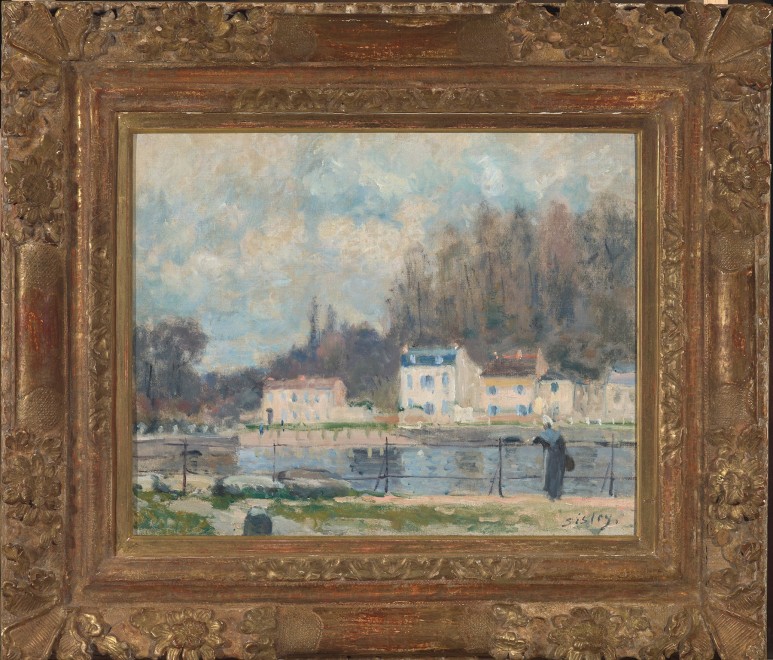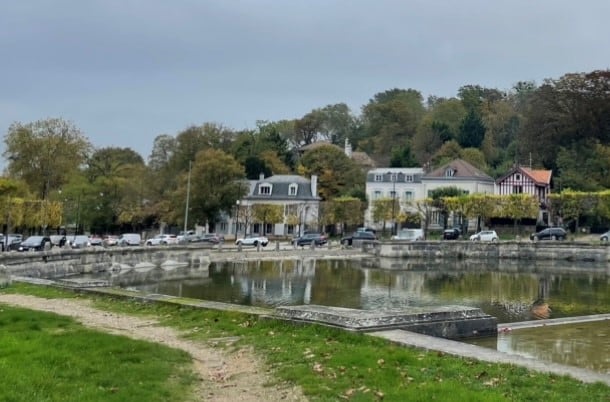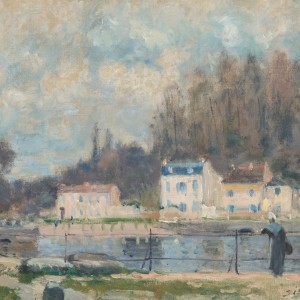Provenance
Eugène Blot, Paris (and sold: Hôtel Drouot, Paris, 9 and 10 May 1900 lot 158 [as Le Loing à Moret])
Mme Besnard, Paris (acquired at the above sale)
G. Urion, Paris (and sold: Hôtel Drouot, Paris, 16 May 1934, lot 20)
Georges Martin, Paris (acquired at the above sale)
Max Kaganovitch, Paris
Private collection, Switzerland
Private collection, United States
Exhibited
Paris, Galerie Paul Rosenberg, Paris, Exposition SISLEY, 1939, no. 10
Paris, Galerie Max Kaganovitch, Œuvres choisies du XIXe Siècle, 22 May-5 July 1950, no. 44
Zürich Kunsthaus, (long-term loan)
Literature
Daulte, F., Alfred Sisley, Catalogue Raisonné de l’œuvre peint, Lausanne, ed. Durand Ruel,1959, no. 173, ill. (as La Seine à Port-Marly)
De Renoir a Vuillard, Marly-le-Roi, Louveciennes, leurs environs (exh. cat) Musée-Promenade,
Marly-le-Roi-Louveciennes, 22 March-24 June 1984, p. 108 (illus.)
Stevens, M.A (ed.), Alfred Sisley (exh. cat.), Royal Academy of Arts ; Musée d'Orsay ; Walters Art Gallery ; Yale University Press, London, Paris, Baltimore, New Haven, 1992, p. 160
Brame S., Lorenceau, F., Alfred Sisley, Catalogue raisonné des peintures et des
Pastels, Paris, La Bibliothèque des arts, Lausanne, 2021, no. 179, p. 99
Catalogue note
In late 1874, Alfred Sisley relocated to Marly-le-Roi, a picturesque town about 18 kilometers west of Paris. He resided there through the winter of 1877, during which he produced a series of around twenty paintings centered on Marly’s waterworks, the l’abreuvoir—a former royal water reservoir repurposed for everyday uses like washing clothes and watering horses. This collection of works, known informally as the Marly series, reflects Sisley’s fascination with the region’s history and natural beauty.
The town was once home to the Château de Marly, a grand palace built for King Louis XIV in the late seventeenth century. Designed as a retreat from the grandeur of Versailles, the château featured elaborate water gardens with fountains, cascades, and terraced pools fed by water from the Seine, transported via an aqueduct. By the time Sisley arrived, the château had been dismantled, and its opulent gardens had been converted into practical utilities. Sisley, who lived in a house overlooking the former estate’s water features, found inspiration in this transformation, capturing the waterworks from various perspectives and throughout different seasons. His paintings from this period, now held in the Art Institute of Chicago, the National Gallery in London, and the Museum of Fine Arts in Boston, reflect his deep engagement with the evolving landscape and its changing moods.
Sisley’s depiction of the Marly-le-Roi waterworks illustrates a nuanced transition between tradition and modernity. His focus on the everyday use of the waterworks, rather than its historical grandeur, aligns with the broader Impressionist movement’s emphasis on contemporary life. One account evocatively conjured the area’s past grandeur as seen from a passing boat on the Seine, depicting the remnants of the palace amidst lush, unruly foliage and weathered gates: “Row slowly, and listen to the conductor on the tramway of the riverbank, as he names these radiant landscapes […] you will think of Dubarry, of Louis XV, and the almost untraceable remnants of the splendid palace.”
Sisley’s stay in Marly-le-Roi was part of a broader Impressionist engagement with the region, following Camille Pissarro’s visit in 1870 and preceding Mary Cassatt’s in 1880, each of whom explored the evolving landscape and contemporary life, further bridging the gap between historical subjects and modern perspectives. In the early 1870s, Pierre-Auguste Renoir visited nearby Louveciennes, echoing Pissarro’s exploration in his paintings.
In this painting, we find ourselves not far from Sisley’s residence at 2 Avenue de l’Abreuvoir. The scene features a woman elegantly poised by the water’s edge, her presence providing a serene focal point amidst the broader landscape. In the distance, quaint houses and a dense forest rise gently, evoking the area’s historical association with the king’s water gardens. Sisley’s brushstrokes are deft and expressive, capturing the tranquil movement of the water and the interplay of light and shadow. The painting skillfully balances the calmness of the immediate foreground with the subtle depth of the background, reflecting Sisley’s masterful ability to convey both the historical resonance and the natural beauty of the landscapes he encountered.
This painting was once part of the collections of two distinguished figures in the French art world. Among its owners was Eugène Blot (1883–1976), a French painter and decorator known for establishing the Blot Institute of Decorative Painting. Founded in 1925 in Reims, the Blot Institute remains a leading institution in the field of decorative arts. The painting later came into the possession of Max Kaganovitch (1891–1978), a Lithuanian-French sculptor, art dealer, and collector celebrated for his discerning taste in Impressionist and Fauvist art. In 1973, Max Kaganovitch generously donated his private collection of paintings to the French state. Now part of the Musée d’Orsay, this collection is known as the Max and Rosy Kaganovitch Collection. It includes masterpieces by Alfred Sisley, Vincent van Gogh, Paul Gauguin, Paul Cézanne, Georges Seurat, Maurice de Vlaminck, and Chaim Soutine.
This note was written by Elsa Dikkes.






